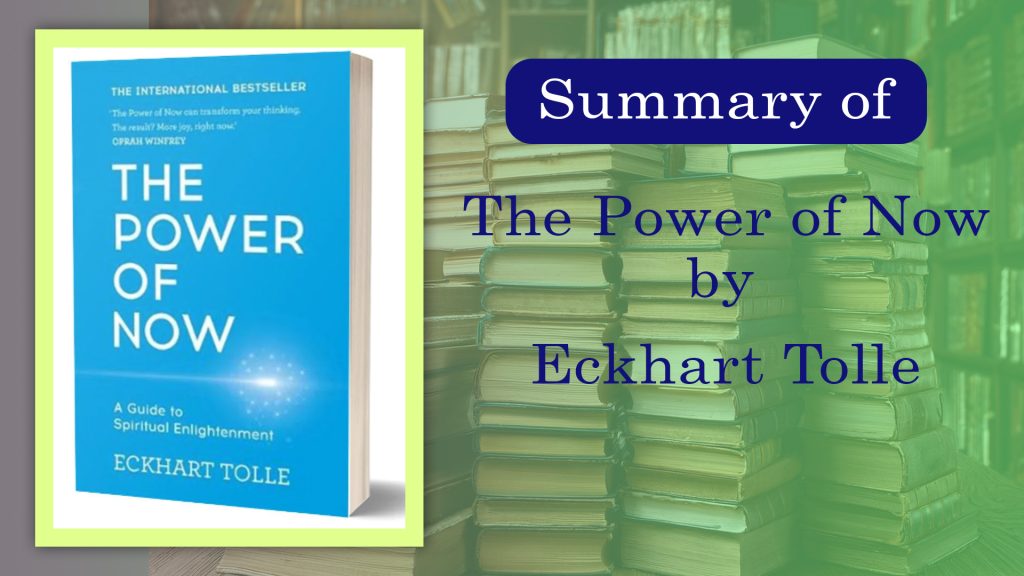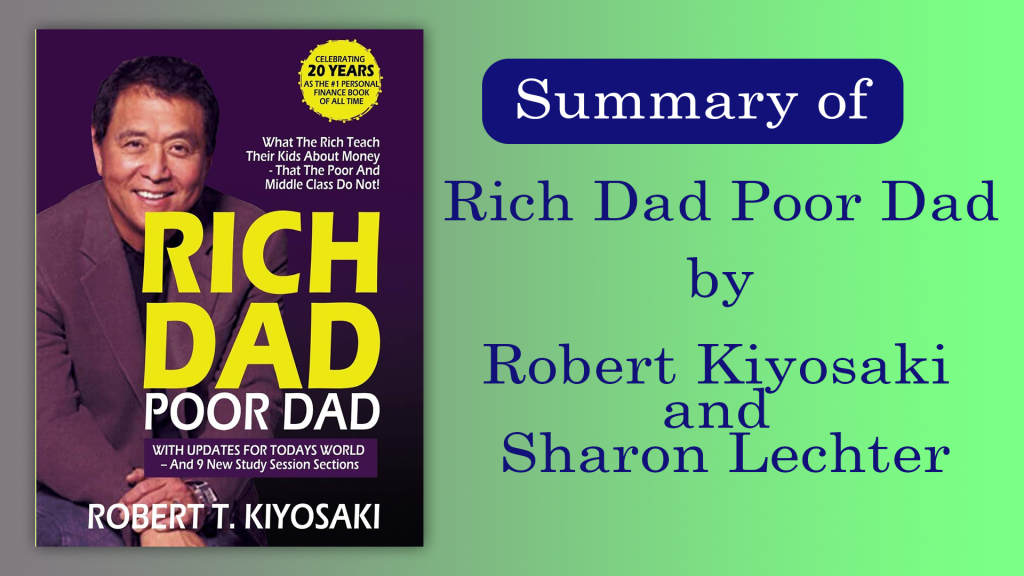Main Topic or Theme
“The Power of Now” focuses on the concept of living fully in the present moment. Eckhart Tolle argues that true peace and fulfillment can only be found by disconnecting from the ego and the constant stream of thoughts that take us away from the now.

Key Ideas or Arguments Presented
- Presence Over Thought: The primary argument of the book is that most of our suffering comes from living in the past or future, rather than the present moment.
- The Ego as a False Identity: Tolle explains how the ego, a mental construct, prevents us from accessing the true self and the peace found in the present.
- The Pain-Body: He introduces the concept of the “pain-body,” a form of accumulated emotional pain that thrives on negativity and keeps us trapped in a cycle of suffering.
- Freedom Through Acceptance: Acceptance of the present moment as it is, without judgment, is the key to spiritual awakening and personal transformation.
Chapter Titles and Summaries
Introduction: The Origin of the Book
Tolle describes how his crisis led to a profound spiritual awakening, which laid the foundation for “The Power of Now.”
Chapter 1: You Are Not Your Mind
This chapter introduces the idea that the mind, and particularly the ego, creates an illusion of self that leads to suffering. Tolle emphasizes the importance of observing one’s thoughts without attachment.
Chapter 2: Consciousness: The Way Out of Pain
Tolle discusses how bringing consciousness to the present moment allows one to transcend pain. He argues that pain is an illusion created by the mind, and it dissolves when faced with full consciousness.
Chapter 3: Moving Deeply Into the Now
In this chapter, Tolle explores techniques to deepen one’s connection to the present moment, such as focusing on the breath and feeling the inner body.
Chapter 4: Mind Strategies for Avoiding the Now
Tolle identifies common strategies the mind uses to avoid the present, such as constant thinking, worrying, and living through others. He suggests mindfulness practices to counteract these tendencies.
Chapter 5: The State of Presence
Here, Tolle explains the concept of “presence” and how it is different from simply being aware. Presence involves being fully engaged with the now without distraction or thought.
Chapter 6: The Inner Body
Tolle introduces the practice of tuning into the body’s energy field as a way to stay anchored in the present and avoid being lost in thought.
Chapter 7: Portals Into the Unmanifested
This chapter discusses ways to access deeper states of consciousness and connect with the unmanifested, or the source of all life, through presence.
Chapter 8: Enlightened Relationships
Tolle applies his teachings to relationships, emphasizing how presence can lead to more conscious and harmonious connections with others.
Chapter 9: Beyond Happiness and Unhappiness There Is Peace
Tolle argues that true peace transcends the dualities of happiness and unhappiness and is found in accepting the present moment.
Chapter 10: The Meaning of Surrender
The final chapter deals with the concept of surrendering to the present moment, which Tolle defines as accepting life as it is without resistance.
Key Takeaways or Conclusions
- Embrace the Present: Peace and fulfillment are found in the present moment, not in past regrets or future worries.
- Disidentify from the Ego: The ego is not who you truly are, and identifying with it only leads to suffering.
- Practice Presence: Techniques such as mindfulness, body awareness, and conscious breathing help anchor one in the now.
- Transform Pain: By bringing conscious awareness to pain, one can dissolve it and free oneself from suffering.
- Surrender to What Is: Acceptance of the present moment without resistance leads to inner peace.
Author’s Background and Qualifications
Eckhart Tolle was born in Germany in 1948 and later moved to Canada. He experienced a profound spiritual awakening at the age of 29, after years of depression and anxiety. This awakening became the foundation for his teachings and writings. Tolle is now a renowned spiritual teacher, and “The Power of Now” is one of his most influential works.
Comparison to Other Books on the Same Subject
- “The Power of Now” vs. “The Art of Happiness” by Dalai Lama: While both books explore the path to inner peace, Tolle focuses on presence and consciousness, whereas the Dalai Lama emphasizes compassion and ethical living.
- “The Power of Now” vs. “A New Earth” by Eckhart Tolle: Tolle’s later book expands on the themes of “The Power of Now,” applying them to a broader context of social and global transformation.
Target Audience or Intended Readership
- Spiritual Seekers: Individuals looking for practical guidance on spiritual awakening.
- Those Struggling with Anxiety or Depression: People seeking relief from mental suffering and a path to inner peace.
- Mindfulness Practitioners: Readers interested in deepening their mindfulness practice.
Reception or Critical Response to the Book
“The Power of Now” has been widely praised for its clarity and practical advice. It became a bestseller and is considered a modern spiritual classic. Critics have noted its accessibility and its transformative impact on many readers. However, some have critiqued it for being too abstract or repetitive.
Publisher and First Published Date
- Publisher: New World Library
- First Published: 1997
Recommendations [Other Similar Books on the Same Topic]
- “A New Earth” by Eckhart Tolle
- “The Art of Happiness” by Dalai Lama
- “The Untethered Soul” by Michael A. Singer
- “Radical Acceptance” by Tara Brach
- “The Miracle of Mindfulness” by Thich Nhat Hanh
To Sum Up: The Book’s Biggest Takeaway
The present moment is all there ever is; true peace is found only in the now.


